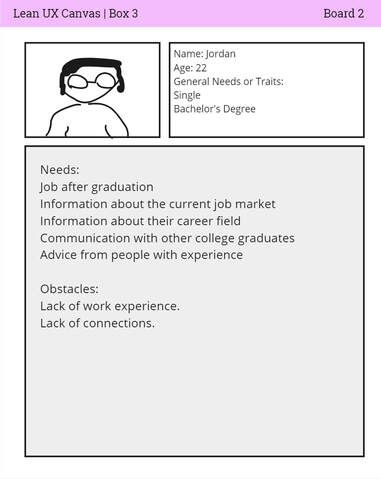Conclusion
If there's anything I've learned from this project, it's that the things we achieved would have been much more difficult to accomplish without Lean UX. Lean UX is invaluable because it lets you bounce back from your mistakes and push forward headstrong. Our first prototype was full of many errors, bugs, and design flaws. Imagine if we continued with the project, unaware of these glaring issues that need to be addressed? The project would likely fail at launch, resulting in a waste of time, money, effort, and resources. Even our final project has its own problems, but the great thing about it is that with Lean UX there is literally always time to improve it. It prioritizes both the product and the user, so nothing gets wasted in the process.
This concept also ties to the behavior we wish to promote in Job Quest. It is much better for those looking for jobs to fail and learn now, than to navigate the job market under the assumption that you have everything figured out and continue to fail as a consequence.
If I could change one thing, I would have a reflection meeting after a major milestone. I think having that extra meeting would help the information we've gained marinate, giving us some breathing room to just sit and discuss our findings. We took notes of course, but more discussions could have helped us draw new connections and advance even further.
Otherwise, I am very satisfied with the end result, and it was a pleasure working with each and every one of my teammates. We each pulled our own weight until the very end!










